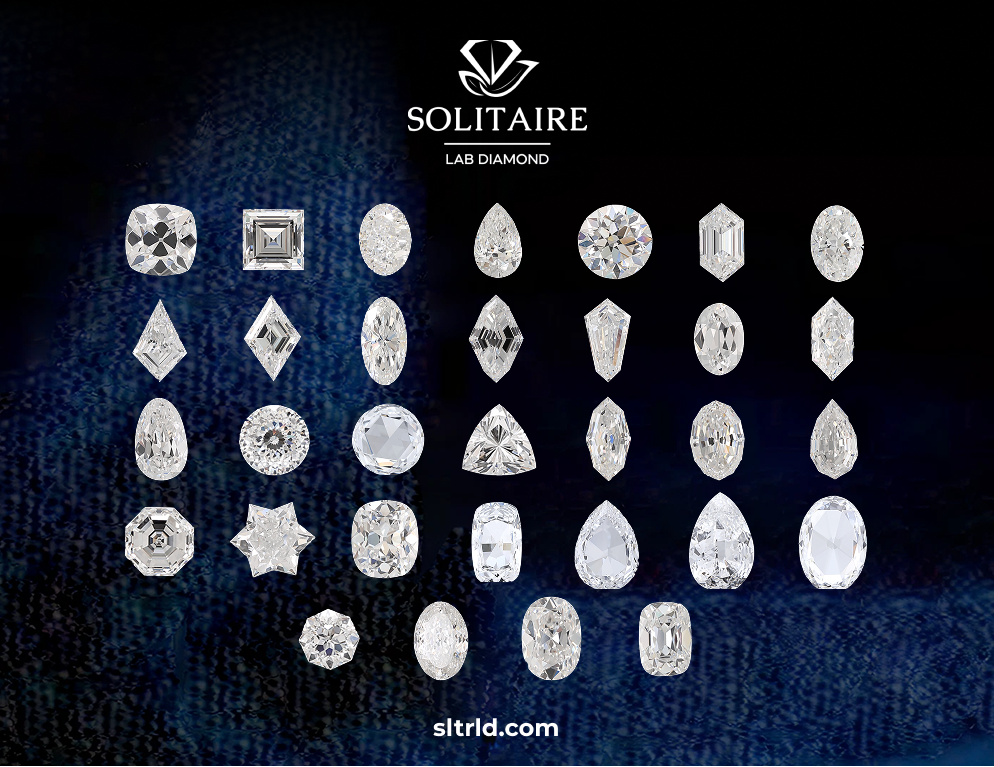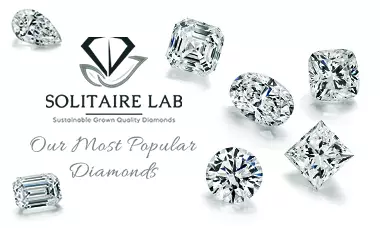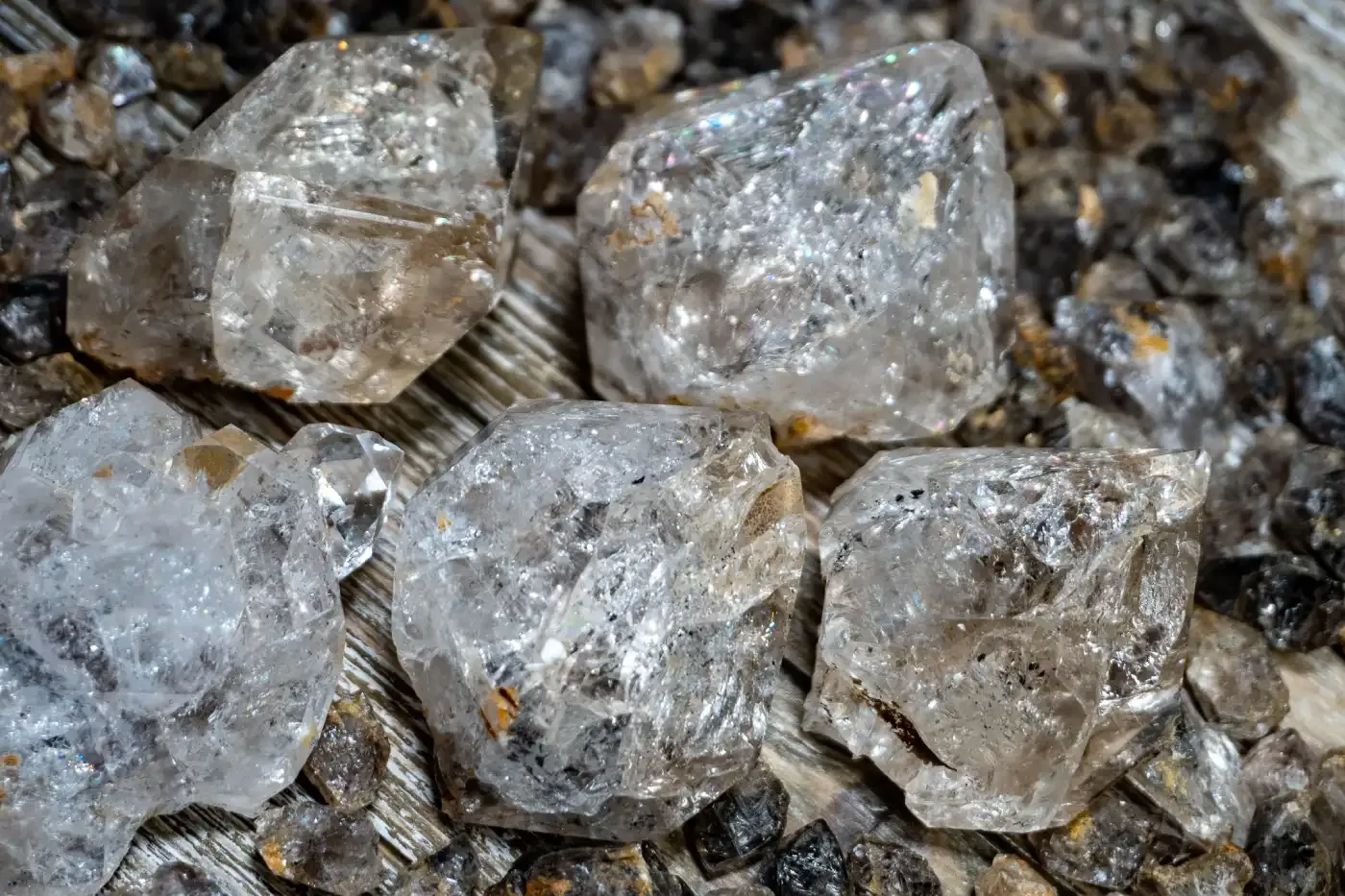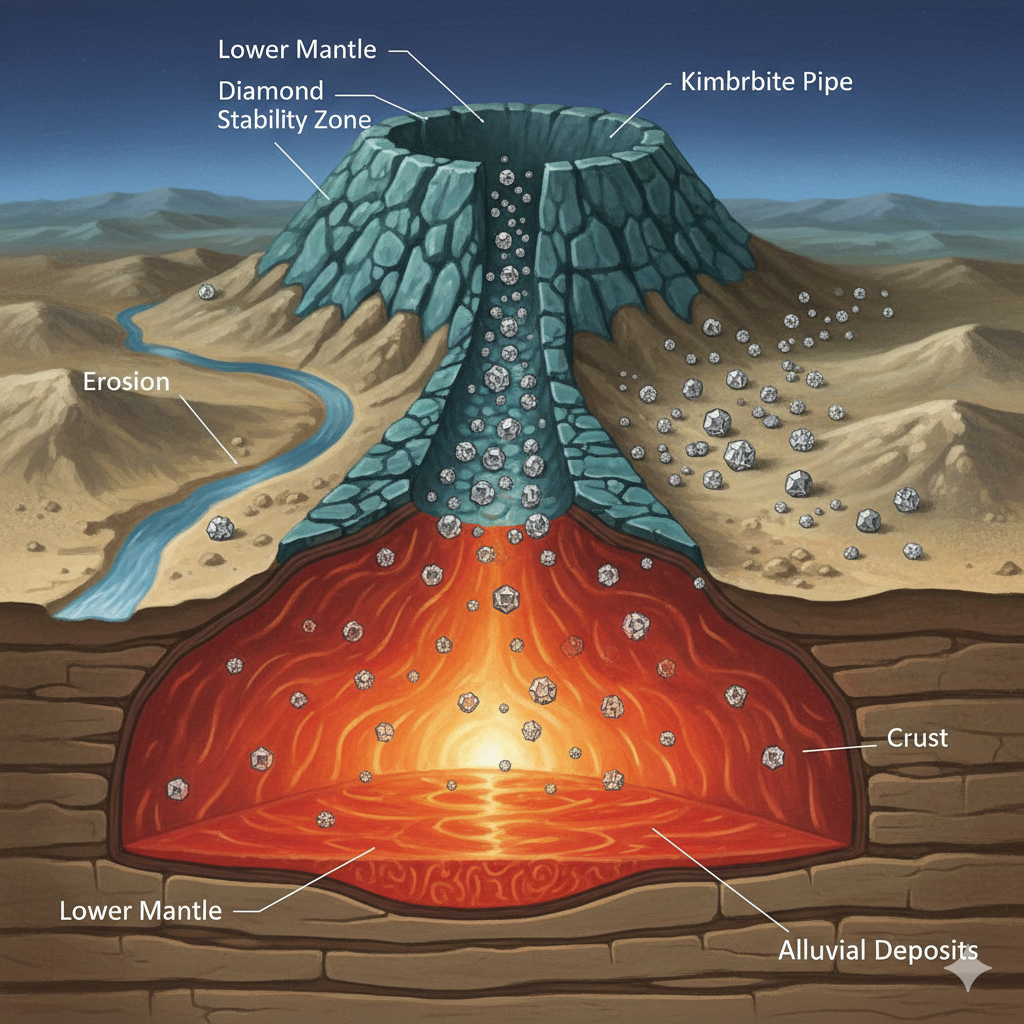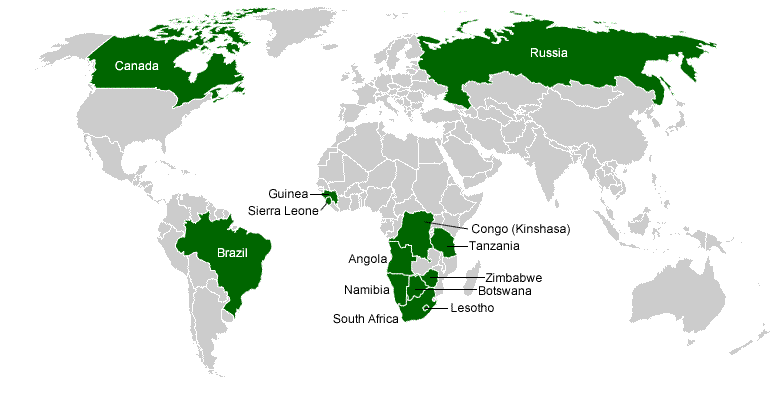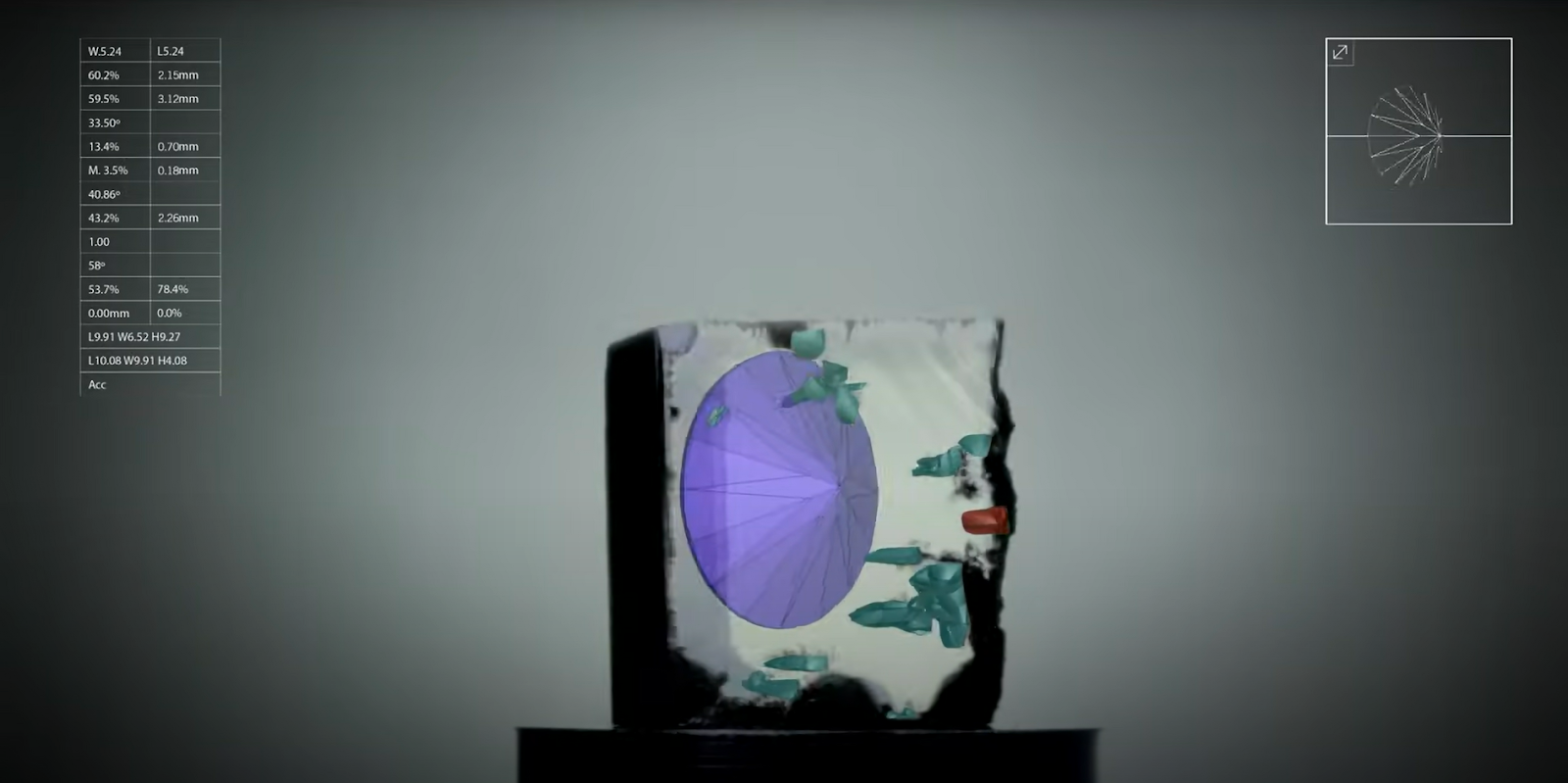Diamonds are some of the most beautiful and valuable gems in the world. They shine in engagement rings, necklaces, and even crowns.
But have you ever wondered how these sparkling stones are made or where does diamond come from?
Some diamonds are formed deep inside the Earth over millions of years, while others are created in modern laboratories.
The story behind each diamond is full of surprises, science, and adventure.
In this article, we will discover how diamonds form, where they are found, and how new lab-grown diamonds are changing the industry.
What Are Diamonds Made Of?
Source: How Diamonds Are Formed and Brought to the Surface
Diamonds are made of pure carbon. That is the same element found in pencil lead and in the air we breathe.
But what makes diamonds truly amazing is how those carbon atoms are arranged.
Under extreme heat and pressure, the atoms form a crystal structure where each carbon atom is connected to four others in a perfectly balanced pattern. This strong structure makes diamonds the hardest natural substance on Earth.
The way the atoms are arranged forms diamonds that shine brightly, reflecting light to create the sparkle and shine we all love.
How Are Diamonds Formed?
Diamonds reach the surface through a fascinating process that involves:
Natural Formation
Diamonds form deep inside the Earth, about 90 to 120 miles below the surface. There, carbon atoms are exposed to extremely high heat, that is, over 2,000 degrees Fahrenheit, and incredible pressure that is more than 725,000 pounds per square inch.
Under these conditions, carbon slowly turns into diamond. This process takes an enormous amount of time, usually between one billion and three billion years.
Volcanic Activity
After forming, diamonds stay trapped in the Earth’s mantle unless volcanic eruptions bring them closer to the surface. Millions of years ago, violent eruptions created narrow, carrot-shaped volcanic pipes made of rocks called kimberlite and lamproite.
Magma carried the diamonds upward at high speeds, eventually depositing them near the surface where humans could find them.
Time Frame
Most diamonds today are between one billion and three billion years old. Some even predate dinosaurs, forming long before complex life existed on Earth. This incredible age makes diamonds even more remarkable.
Now that we know how diamonds form, let’s see where they are found around the world.
Where Are Diamonds Found?
Source: Countries Produce the Most Gem Diamonds
Here is the list of diamond-producing Countries:
- Russia: The largest producer, responsible for about 30% of the world’s natural diamonds, mainly from Siberian mines.
- Botswana: Known as the "diamond capital of Africa," diamonds are a major part of the country’s economy.
- Canada: A major producer since the 1990s, with northern mines known for ethically sourced diamonds.
- Australia: Famous for the Argyle mine, which produced rare pink diamonds (now closed).
- South Africa: Where the modern diamond rush began in the 1860s, historically significant in diamond mining.
Additionally, Diamonds do not directly appear on the surface; they have to be carefully extracted using different mining methods.
Type of Mining
Here are the different ways of mining to extract diamonds:
- Open-Pit Mining: Large craters are dug to reach kimberlite pipes near the surface. This method removes huge amounts of earth and can go hundreds of feet deep.
- Underground Mining: Used when diamonds are deep underground. Miners create tunnels that follow the kimberlite pipes to extract the gems.
- Alluvial Mining: Diamonds that have been washed away from volcanic sources are found in rivers, oceans, or along coasts. Miners sift through sand and sediment to collect them.
With mining methods explained, let’s take a closer look at the stages of diamond formation.
What Are the Stages of Diamond Formation?
The following are the stages a diamond goes through before it reaches the surface.
Stage 1: Carbon Transformation
Diamonds begin deep inside the Earth, where carbon atoms are exposed to extreme heat and pressure. Under these conditions, carbon slowly changes into diamond crystals.
Stage 2: Crystal Growth
Over millions or even billions of years, these diamond crystals grow slowly. This long growth period gives diamonds their strength, clarity, and brilliance.
Stage 3: Transport to the Surface
After forming, diamonds remain trapped deep underground unless volcanic activity carries them upward. Explosive eruptions create magma pipes, called kimberlite or lamproite, which transport the diamonds closer to the Earth’s surface.
Stage 4: Accessibility and Discovery
Once near or at the surface, diamonds can be mined or carried by rivers and streams. This is how they finally become available and use in jewelry.
And that’s how a diamond travels from deep underground to sparkle in your jewelry.
Natural diamonds take billions of years to form deep within the Earth. Today, modern science can create real diamonds in just a few weeks, offering a sustainable and ethical alternative that looks and shines just like the natural ones.
Lab Grown Diamonds
Source: Making of Created Diamond
Lab grown diamonds are real diamonds created in labs. Unlike natural diamonds that take billions of years to form, lab-grown diamonds are created in just a few weeks using modern technology.
There are two main ways to make them:
- High Pressure High Temperature (HPHT): This method mimics the intense heat and pressure deep inside the Earth to turn carbon into diamonds.
- Chemical Vapor Deposition (CVD): A small diamond “seed” is placed in a chamber filled with carbon-rich gas. The gas breaks down, and carbon atoms gradually build up layers of diamond around the seed.
Lab grown diamonds are better for the environment since no mining is involved.
They also cost 30–40% less than natural diamonds, making them a more affordable and ethical choice.
For a deeper technical breakdown of these processes and how they compare to natural formation, explore our detailed guide on how lab-grown diamonds are made and created.
Even experts often need special tools to distinguish them from natural diamonds. To understand the complete comparison in terms of price, quality, and value, read our comprehensive analysis of lab grown vs natural diamonds.
How Diamonds Reach Jewelers?
Once diamonds are mined or created in a lab, they undergo a careful journey of grading, cutting, and polishing before being found in jewelry stores.
First, they are sorted by size, shape, color, and clarity. The most valuable diamonds are sent to gem labs like the GIA or IGI to get official grading reports.
Next comes cutting and polishing. Skilled diamond cutters carefully examine each diamond to bring out its shine while reducing waste.
They shape the diamond into flat surfaces that catch and reflect light. A diamond that is cut well sparkles brightly, but a poorly cut one can appear dull even if it is high quality.
Finally, diamonds move through a supply chain of brokers, wholesalers, and manufacturers before reaching jewelry stores, where they are set into rings, necklaces, and other jewelry pieces.
Why Diamonds Are So Precious?
Diamonds are precious because of the amazing journey they take to reach us. Some form deep inside the Earth over billions of years under intense heat and pressure, while others are carefully grown in laboratories that recreate these natural conditions in just a few weeks.
Whether natural or lab-grown, every diamond is a mix of patience, skill, and science, which is why they shine so brilliantly and last a lifetime.
With traditional mining impacting the planet, many buyers today prefer sustainable options. Lab-grown diamonds offer the same sparkle and strength as natural ones, but are created with less environmental impact and at a more accessible price.
From engagement rings to exquisite jewelry for special occasions, you will find pieces that match the elegance of natural diamonds.
And if you’re looking for one, check out the Solitaire Lab Diamond collection or take the help of our experts, who can help you find a piece that’s beautiful, sustainable, and affordable.
